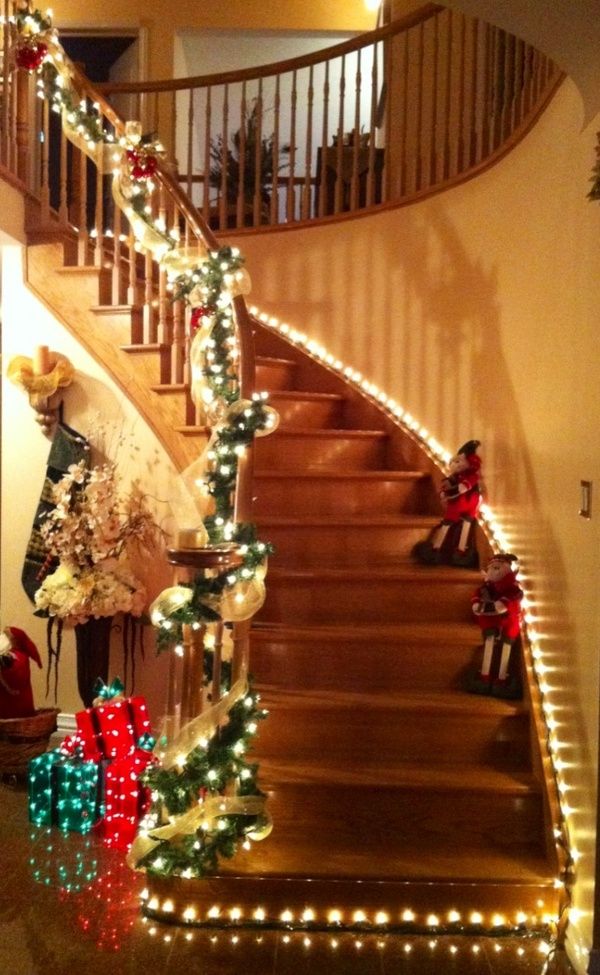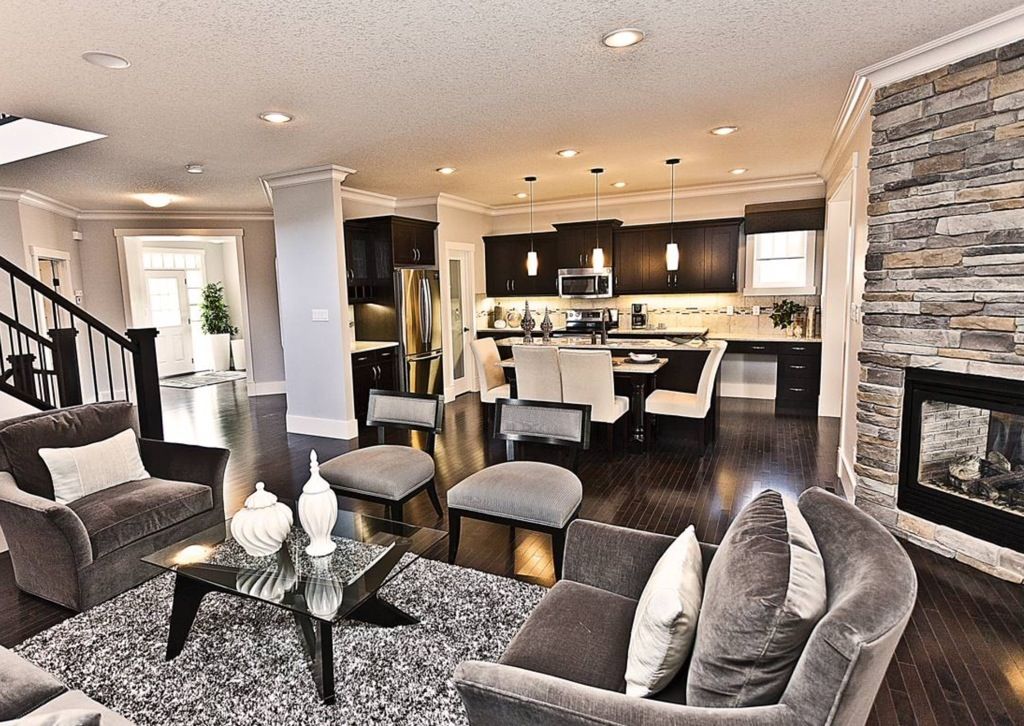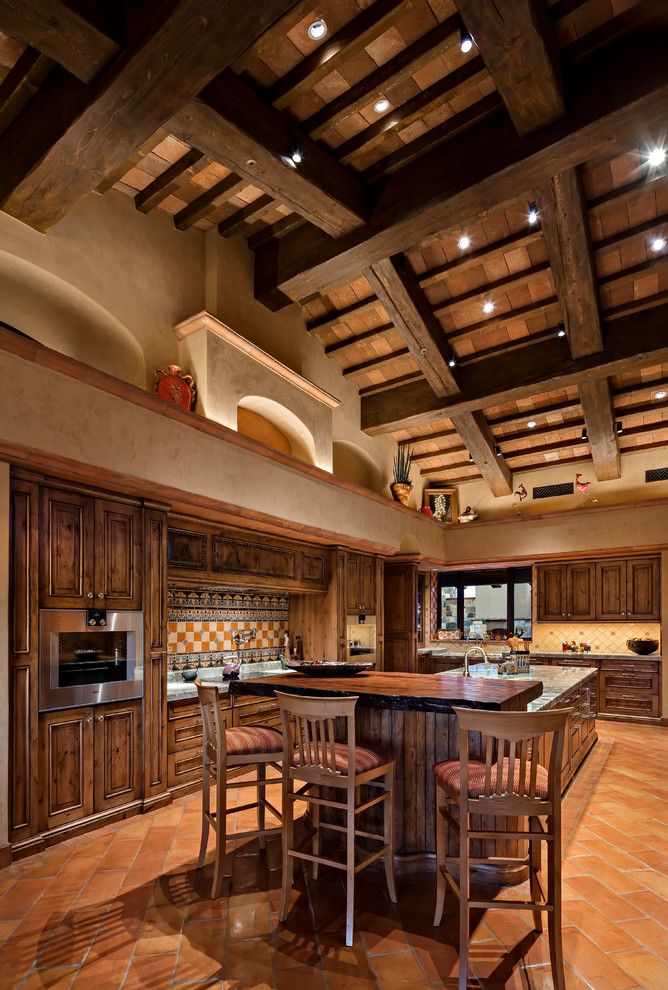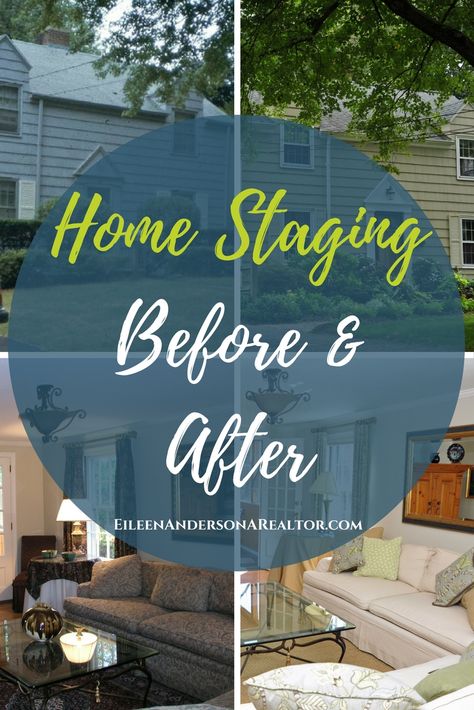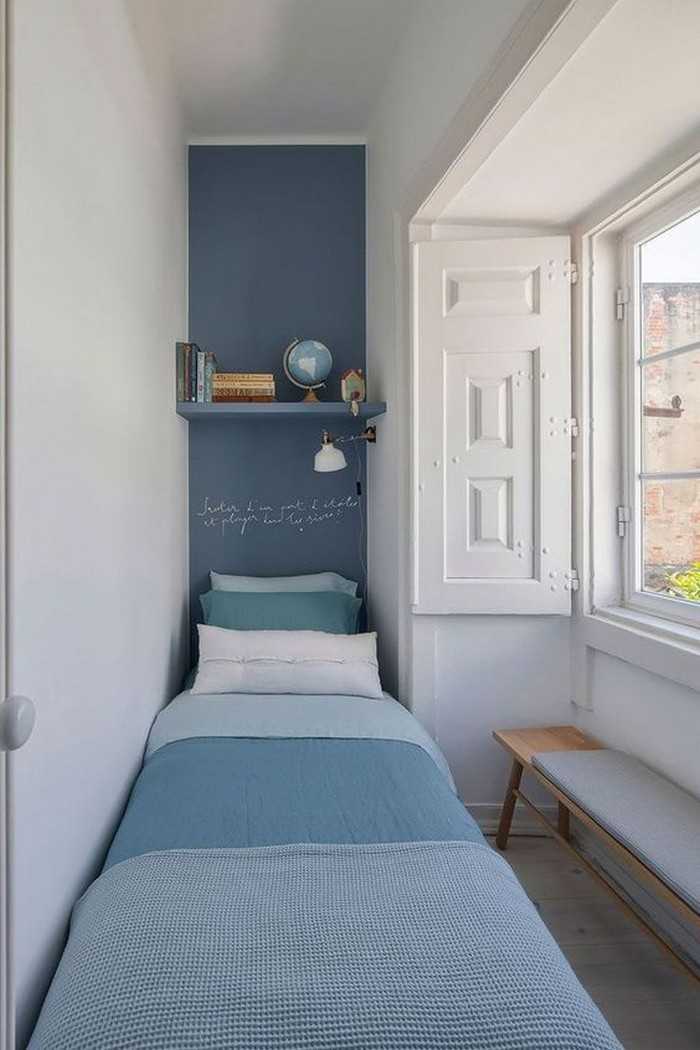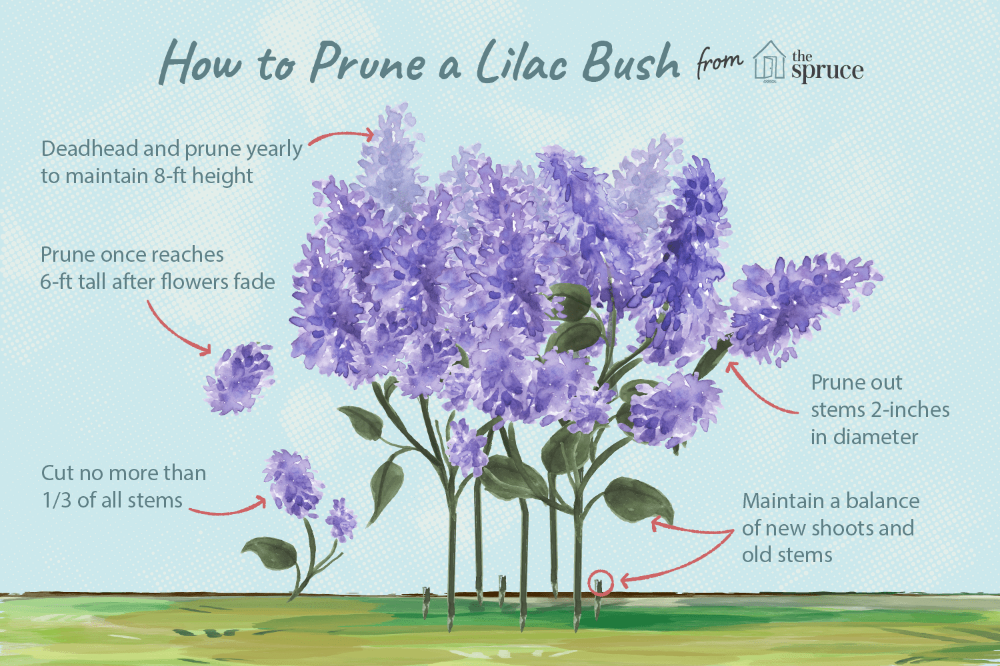Small back garden design ideas
Small Garden Design Ideas | Garden Design
See how gardeners around the country have created wonderful gardens in small spaces
Small gardens have a lot more potential than you may realize. Whether dealing with a long narrow space behind a vintage home, a cramped backyard that lacks privacy, or a shabby garden at the rear of a brownstone the possibilities are endless. So don’t write off your 40-foot by 20-foot outdoor area just yet—with the right design, it could be an incredible garden.
On this page:
- POPULAR SMALL GARDEN ARTICLES
- CONSIDER FUNCTIONALITY
- 13 TIPS FOR SMALL SPACES
- SMALL GARDEN INSPIRATION
- MORE SMALL GARDENS
POPULAR SMALL GARDEN ARTICLES
Small Garden Pictures
Browse photos of landscapes that make the most of limited space.
7 Steps to Transform a Small Garden
See how a designer made the most of this little, enclosed backyard.
Create the Perfect Balcony Garden
Learn the basics of designing a small-scale balcony garden, plus get tips for selecting the best plants and containers.
Small Garden Plants
From trees and shrubs, to flowers and grasses—discover 10 plants for a small garden.
Growing Vegetables in Small Spaces
Practical tips for increasing your harvest when every square inch matters.
Container Gardening
Dress up a small space with gorgeous planters full of flowers, veggies, and more.
CONSIDER FUNCTIONALITY
Designer Karen Chapman says, "Neither beauty nor function needs to be limited by the size of your outdoor space, but it is important to prioritize your wish list in order to make every square inch count." She offers the following advice, suggestions, and tips:
Do you love to entertain family & friends?
Entertaining outdoors always seems so much more relaxed, both for the hosts and the guests, but how many people do you need to accommodate? Two for an intimate lunch? Eight for a sit-down dinner? Twelve or more for an informal BBQ?
Versatile elements that can satisfy more than one function are key in maximizing the potential of small spaces.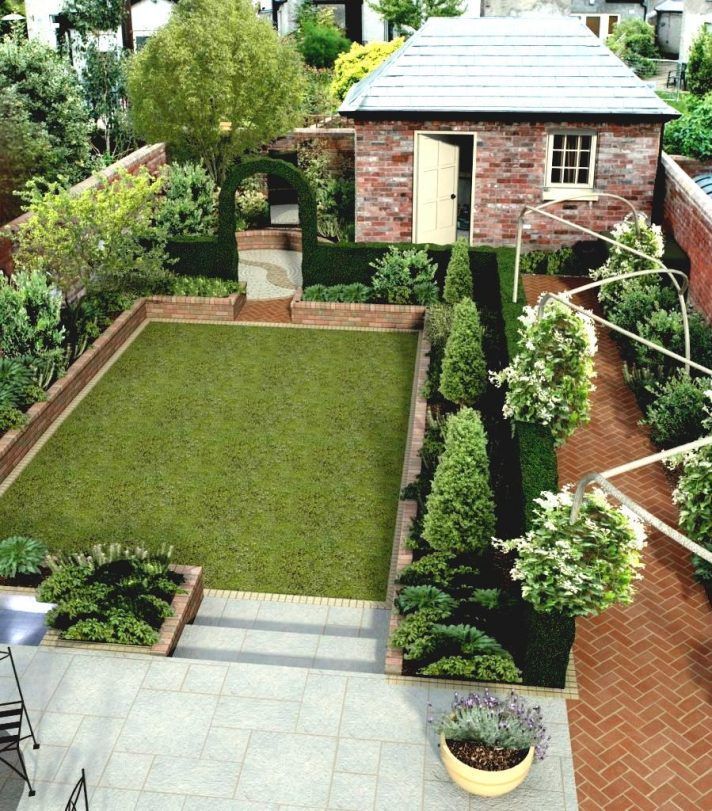
- Folding bistro tables and chairs can easily be stored when not in use and are lightweight enough to make set up a breeze.
- Extending patio tables offer versatility when you need to accommodate varying number of guests.
- Add a padded cushion to a sturdy low table to serve as an occasional ottoman or stool.
- Capped retaining walls and raised beds can pull double duty if they are at seating height (approx. 17”) and softened with cushions or a folded blanket.
- Use bench seating at a rectangular patio table rather than individual seats - you will be able to seat more people—ideal for families with small children.
- Rather than a traditional wood-burning fire pit which can look unattractive when not in use and take up a lot of space, consider a gas fire table. These serve as a beautiful focal point even when not in use and are ideal for doubling up as a coffee table thanks to the solid rim.
What do you want to grow?
Are you hoping to grow cut flowers, your favorite herbs, or a few vegetables? When space is limited, it is especially important to determine which of these are worth growing yourself, and which are better to purchase seasonally from your local farmer’s market.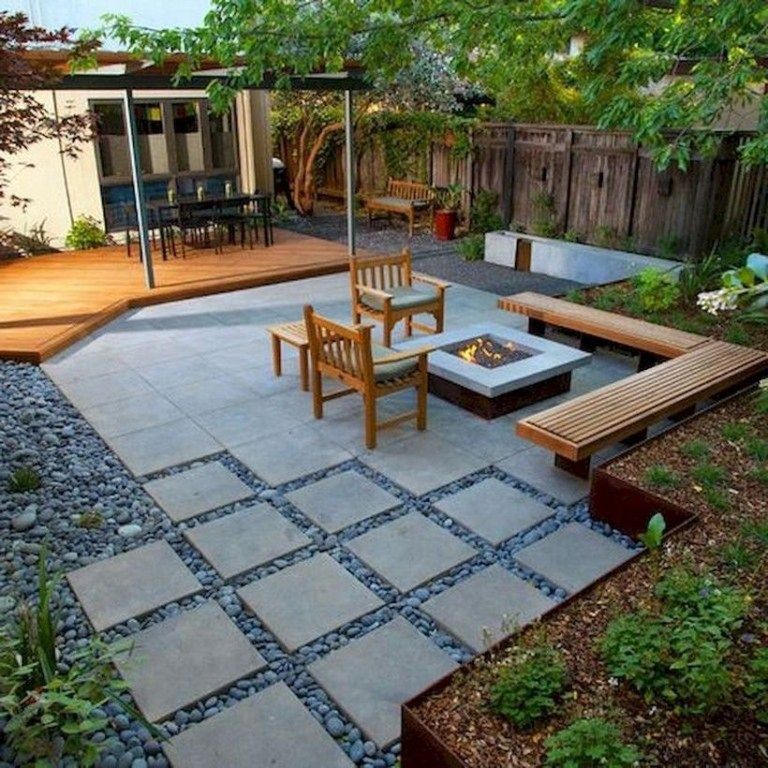 Focus on growing flowers and produce that are usually expensive, hard to find, have a short shelf life, or you use regularly.
Focus on growing flowers and produce that are usually expensive, hard to find, have a short shelf life, or you use regularly.
Is in-ground planting space limited?
Container gardens provide a simple solution for limited in-ground growing; however, consideration should be given to their size and shape.
- Wide, round containers will take up a large footprint on a deck or patio. Look for rectangular. oval or elliptical shapes that can sit closer to a wall or railing.
- Avoid cluttering the ground with multiple small pots—one large, tall container will have much greater impact and be easier to water.
- Adding saucers with wheels under your containers enables you to move them around to create room dividers on a long deck, a secluded reading nook on an exposed patio or simply to follow the pattern of the sun during the growing season.
13 DESIGN TIPS FOR SMALL SPACES
Having considered the functionality of your space, here are a few designer tips to help you really maximize its potential and create the illusion of a much larger garden.
- Look for compact plants. Choose plants that won’t overwhelm the ground plane, but don’t be afraid to include moderate sized or columnar trees to achieve the appropriate scale.
- Think outside the box. What about vertical gardens? Railing planters? Hanging baskets for strawberries? (See an example of a living wall/vertical succulent garden below.)
- Build a strong foliage framework. Use interesting plants with colorful leaves before layering in flowering plants.
- Make every square inch count. Focus on high-value trees, shrubs, and perennials that offer multiple seasons of interest with attractive leaves, seasonal flowers, unique textures, colorful bark and/or great fall color.
- Create privacy. You may not have room for large evergreen trees and shrubs to create privacy. But, would a row of one of the many columnar varieties that provide height—without the width—work? If only seasonal screening is needed, perhaps narrow, columnar, deciduous trees or shrubs would be suitable? Or perhaps growing well-behaved climbers (e.
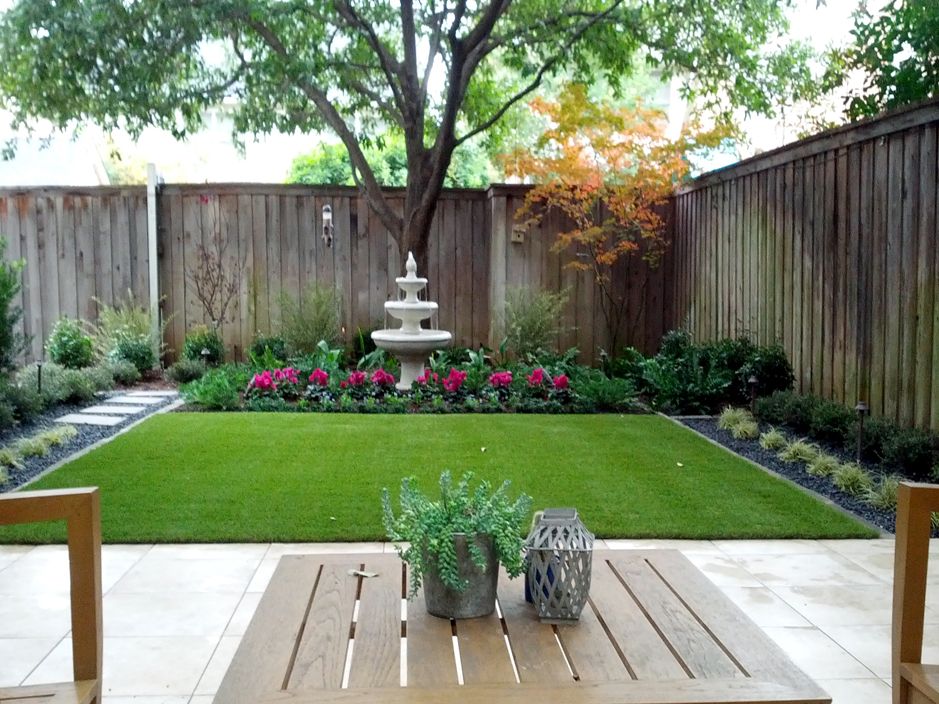 g. jasmine or annual vines) on a vertical trellis would be the best solution.
g. jasmine or annual vines) on a vertical trellis would be the best solution. - Do you really need a lawn? Does your lawn visually break up your space unnecessarily? Does it make more sense to extend the patio?
- Choose outdoor furniture with care. Forgo extra deep armchairs with wide armrests in favor of sleeker profiles.
- Add a water feature. Water features are always a great addition to a garden. While a pond and waterfall may not be realistic, a simple recirculating wall fountain or bubbling tabletop pot may be the answer.
- Create a sense of order. Clean lines bring an orderly feel to the garden. A clear rectilinear design can define spaces, while flowing organic curves can be used to soften awkward angles.
- Use the diagonal axis. A typical suburban garden is often wide but shallow. Looking straight across the back garden therefore emphasizes the shortest dimension.
 Alter the perspective by turning the patio, planting beds, and sight lines 45-degrees to line up with the diagonal axis, creating the illusion of a much larger space. (See an example of this design strategy below.)
Alter the perspective by turning the patio, planting beds, and sight lines 45-degrees to line up with the diagonal axis, creating the illusion of a much larger space. (See an example of this design strategy below.) - Keep the color palette simple. Two or three colors in varying shades, together with green, will be less visually cluttered than a jelly-bean-like explosion.
- Borrow views from outside your boundaries. Frame a distant tree, mountain, or unique architectural detail to give the illusion of greater depth.
- Add outdoor lighting. Create drama and mystery, while extending the use of the garden into the evening hours.
See planting diagrams and plant lists for small landscape designs from Proven Winners.
SMALL GARDEN INSPIRATION
A strong rectilinear design defines each element clearly, allowing enough space for an upper dining terrace, illuminated pathways, a narrow water feature and contemporary raised beds filled with an abundance of colorful foliage in a restrained palette. Photo: Darcy Daniels
Photo: Darcy Daniels
See more of this garden: Going Beyond the Straight and Narrow
Landscape theater is created by the strategic placement of lighting fixtures while clean lines, carefully selected plants, and sleek furniture make the most of this small garden. Photo: Daniel Shea
See more of this garden: London Garden Calls Day and Night.
Retaining walls can double as occasional seating for guests to supplement the lightweight bistro set. Photo credit: Marion Brenner
See more of this garden: A Small Property Gets a Simple & Sustainable Garden
The backyard was transformed by installing a spa, custom lighting, and a lush vertical garden that clads an existing retaining wall. Resurfacing the narrow landing and adding a stairway made of 6-inch-thick sandstone slabs created two levels of outdoor living space. Photo by: Karl Seifert
See more of this garden: Small Backyard Makeover: Using Every Square Inch
Turning the paver patios 45 degrees to the house emphasizes the long diagonal axis, creating a more interesting layout and giving the illusion of greater depth.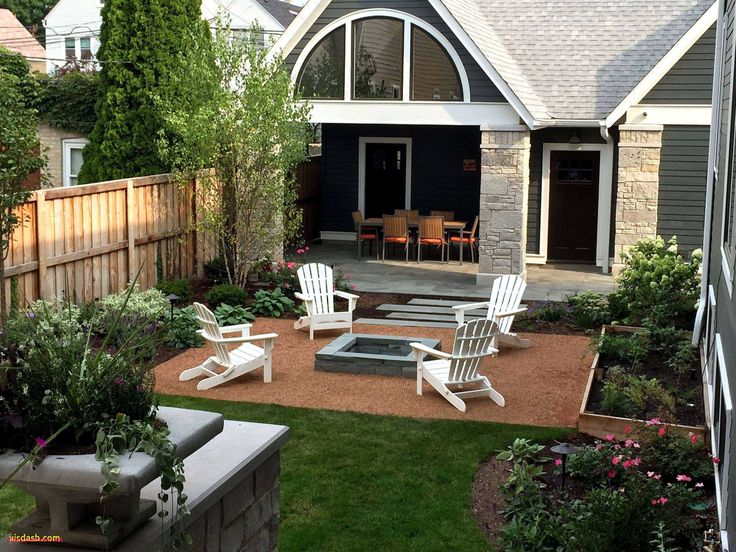 Design by Karen Chapman, Le-jardinet Designs
Design by Karen Chapman, Le-jardinet Designs
MORE SMALL GARDENS
Backyard Makeover
A tiny backyard is transformed into a functional, family-friendly retreat that uses every inch.
5 Lessons From a Small Urban Garden
Designer Greg Loades shares 5 tips he learned while designing his own urban garden.
Tropical Retreat
An overgrown garden is simplified and tidied, resulting in a comfortable and calm retreat.
Simplicity & Structure
A tiny, narrow lot becomes a pocket-size garden full of treasures.
Courtyard Oasis
A courtyard goes from dull to distinctive, loaded with color & personality.
Beyond Straight and Narrow
A sliver of backyard space is transformed into a multifunctional living area.
Small Garden Feels Expansive
A small garden erases the boundaries between inside and out.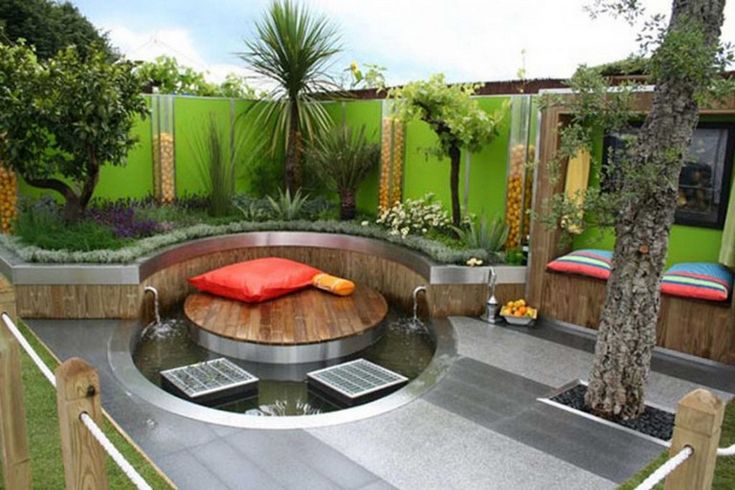
London Townhouse Garden
A small urban garden strikes a balance between beauty and function.
Modest Garden, Mighty Impact
A tight, awkward space becomes a garden for relaxing and reflecting.
Watch this short video to see how to maximize a small space for outdoor living.
RELATED:
Garden Ideas
Landscape Design
A Luxe Look for Less
10 Great Plants for Small Gardens
Get recommendations for small garden plants that won’t outgrow their site By Janet Loughrey, Garden Writer & Photographer
As home lots continue to shrink, one of the biggest decisions is what to plant in the landscape. When space is at a premium, every detail counts, which is why proper plant selection is so important. Choosing small plants, or smaller cultivars or dwarf forms of reliable favorites that won’t outgrow the site will help to keep pruning and editing to a minimum.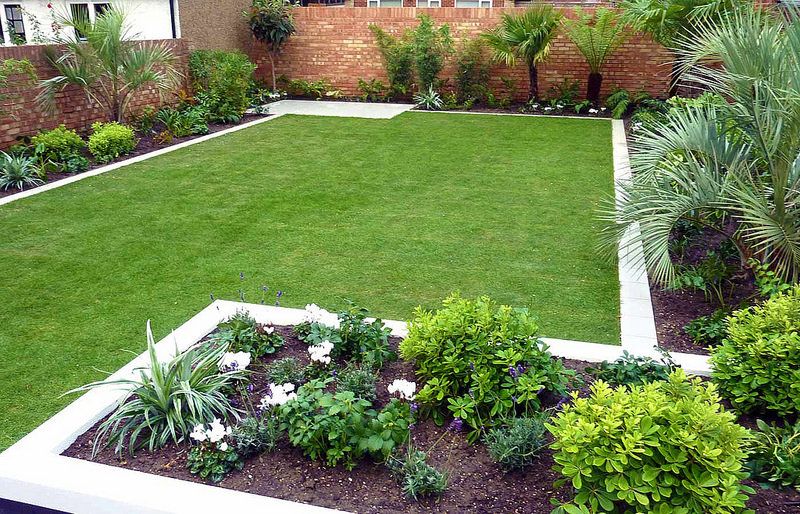 Here are a few suggestions to get you started.
Here are a few suggestions to get you started.
Photo by: Janet Loughrey.
1.
Cornus kousa (Kousa dogwood)Although the average mature size is 15-30 feet high and wide, dwarf forms such as ‘Little Poncho’ and ‘Dwarf Pink’ reach just 8-10 feet tall and wide. Dogwood trees produces creamy white or pink flowers from late spring to early summer, followed by berry-like edible fruits that are attractive through autumn. The glossy green leaves turn brilliant red and purple in fall, while the graceful vase-shaped structure and peeling bronze bark offer winter appeal. Hardy in USDA Zones 5-8, this reliable tree performs best in full sun to partial shade, and is virtually carefree, though regular summer watering is necessary in hotter climates.
Photo by: Iseli Nursery / Randall Smith Photography.
2.
Acer palmatum ‘Sango Kaku’ (coral bark Japanese maple)Japanese maples have long been a staple in home landscapes, and for good reason.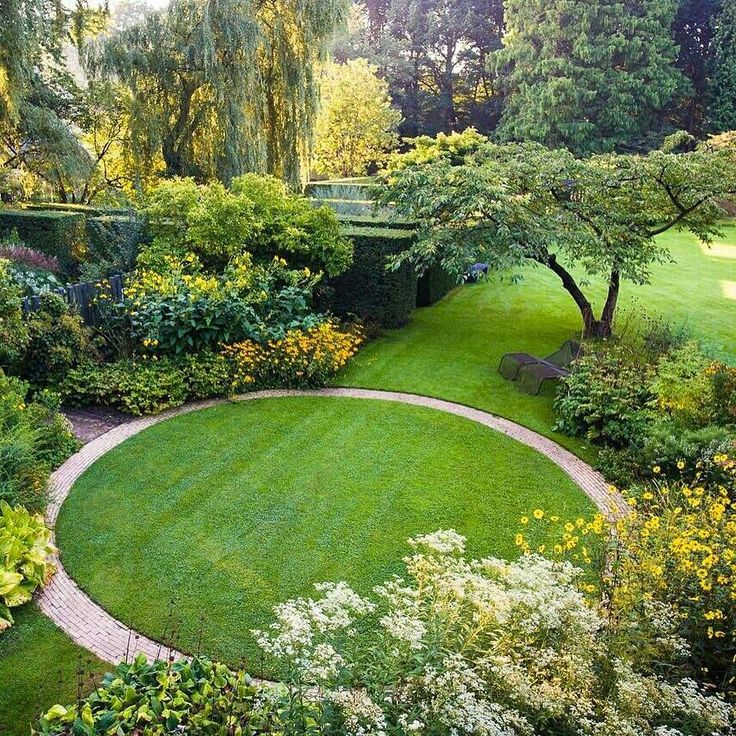 With a wide range of leaf colors—from deep burgundy to chartreuse—brilliant fall foliage, and various forms and sizes, there is something for every type of garden. ‘Sango kaku’ coral bark maple is one of the finest varieties for smaller gardens, with upright structure, and pale green leaves tinged with red that turn brilliant shades of yellow and orange in fall. The most outstanding feature is the coral-pink bark, which becomes brighter—almost florescent—in winter. Hardy in USDA Zones 6-9, coral bark maple reaches 20 feet tall and 15 feet wide, and does best in well-draining soil with protection from hot afternoon sun. This versatile tree can be planted in a small courtyard, used as screening, as a container specimen on a deck or patio, or a focal point at the end of a pathway.
With a wide range of leaf colors—from deep burgundy to chartreuse—brilliant fall foliage, and various forms and sizes, there is something for every type of garden. ‘Sango kaku’ coral bark maple is one of the finest varieties for smaller gardens, with upright structure, and pale green leaves tinged with red that turn brilliant shades of yellow and orange in fall. The most outstanding feature is the coral-pink bark, which becomes brighter—almost florescent—in winter. Hardy in USDA Zones 6-9, coral bark maple reaches 20 feet tall and 15 feet wide, and does best in well-draining soil with protection from hot afternoon sun. This versatile tree can be planted in a small courtyard, used as screening, as a container specimen on a deck or patio, or a focal point at the end of a pathway.
Photo by: Janet Loughrey.
3.
Hydrangea quercifolia (oakleaf hydrangea)A carefree shrub with four-season interest, oakleaf hydrangea bears serrated leaves that turn bright shades of scarlet, purple and orange in fall.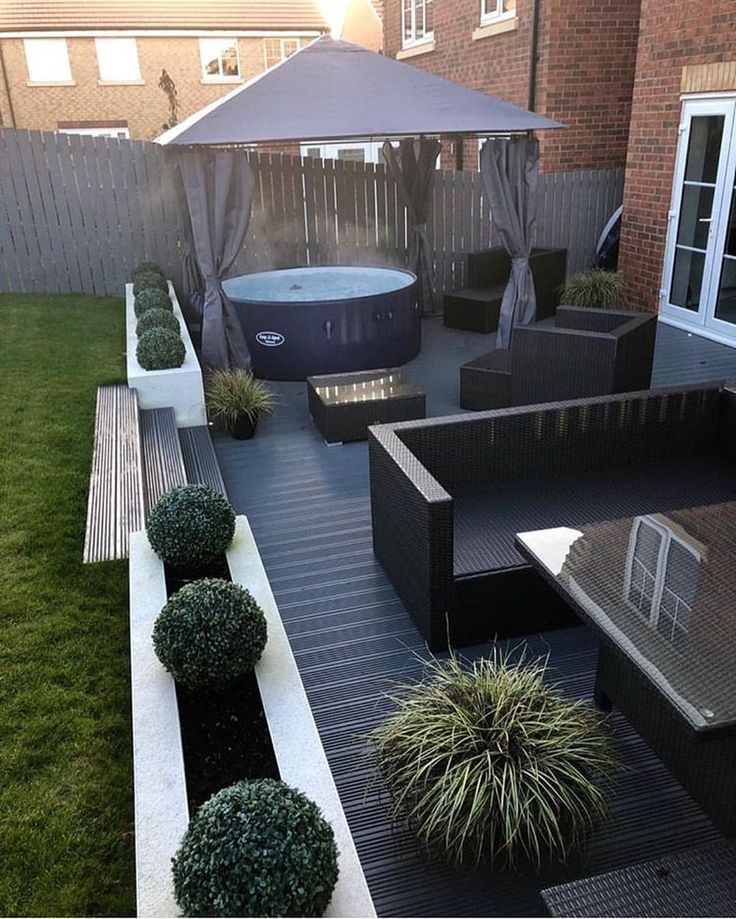 Elegant white flower panicles bloom in summer, fading to hues of pink and soft beige, lasting well into fall. The attractive cinnamon-colored peeling bark is most noticeable in winter. Oakleaf hydrangeas perform best in sunny conditions, with shade during the hottest part of the day, and require less water than other hydrangeas. Hardy in USDA Zones 5-9, standard varieties such as ‘Snow Queen’ reach a mature size of 4-6 feet high and wide, while dwarfs including ‘Pee Wee’ and ‘Ruby Slippers’ will remain smaller. Use oakleaf hydrangea as a foundation plant, or incorporate into a mixed border.
Elegant white flower panicles bloom in summer, fading to hues of pink and soft beige, lasting well into fall. The attractive cinnamon-colored peeling bark is most noticeable in winter. Oakleaf hydrangeas perform best in sunny conditions, with shade during the hottest part of the day, and require less water than other hydrangeas. Hardy in USDA Zones 5-9, standard varieties such as ‘Snow Queen’ reach a mature size of 4-6 feet high and wide, while dwarfs including ‘Pee Wee’ and ‘Ruby Slippers’ will remain smaller. Use oakleaf hydrangea as a foundation plant, or incorporate into a mixed border.
Photo by: Janet Loughrey.
4.
Buxus sempervirens (English boxwood)Traditional boxwood, which are evergreen staples of formal European landscapes, work with any style garden. In a small space, where smart design is essential, boxwood can serve many important functions: instilling order, defining garden rooms, as edging for pathways, or as stand-alone focal points in containers. Tolerant of a wide range of light conditions, from full sun to shade, these deer-resistant shrubs can thrive in a wide range of soils as long as there is good drainage to prevent root rot. ‘Suffruticosa’, which is hardy in USDA Zones 6-8, is one of the best dwarf varieties, reaching a mature size of just three feet tall and wide, minimizing the need for frequent pruning. For colder climates, try mounding dwarf ‘Green Gem’, or upright ‘Green Mountain’, which are both hardy in USDA Zones 4-9.
Tolerant of a wide range of light conditions, from full sun to shade, these deer-resistant shrubs can thrive in a wide range of soils as long as there is good drainage to prevent root rot. ‘Suffruticosa’, which is hardy in USDA Zones 6-8, is one of the best dwarf varieties, reaching a mature size of just three feet tall and wide, minimizing the need for frequent pruning. For colder climates, try mounding dwarf ‘Green Gem’, or upright ‘Green Mountain’, which are both hardy in USDA Zones 4-9.
Photo by: Iseli Nursery / Randall Smith Photography.
5.
Chamaecyparis obtusa ‘Nana Gracilis’ (dwarf hinoki cypress)Dwarf conifers are a great addition to any small garden, as they are slow-growing, low maintenance, and come in a diverse array of shapes and colors for year-round interest. Their uses are similarly wide-ranging: as screening, border accents, focal points, or as container specimens. Native to Japan, dwarf hinoki cypress is one of the most popular evergreens for its captivating layered texture and deep green foliage.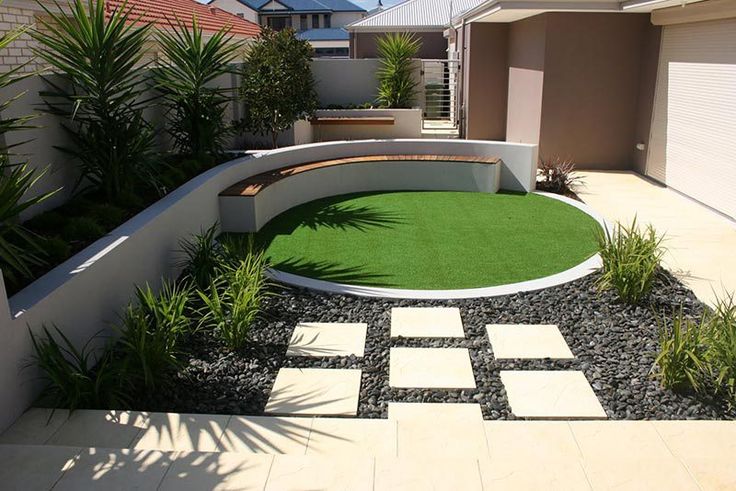 ‘Nana Gracilis’ is exceptionally slow growing, reaching just 6-8 feet tall and 5-6 feet wide after many years. Hardy in USDA Zones 4-8, this pyramidal-shaped conifer performs best in moist, well-draining soil, with protection from hot afternoon sun in warmer climates.
‘Nana Gracilis’ is exceptionally slow growing, reaching just 6-8 feet tall and 5-6 feet wide after many years. Hardy in USDA Zones 4-8, this pyramidal-shaped conifer performs best in moist, well-draining soil, with protection from hot afternoon sun in warmer climates.
Photo by: Tesselaar Plants.
6.
Rosa Flower Carpet® (landscape rose)Roses, America’s most beloved flowers, have a reputation for being fussy and high-maintenance. Many varieties introduced in recent years have been developed for disease-resistance, easy care, increased vigor, and longer bloom time. Some of the most versatile are the ‘Flower Carpet’ series, which grow to just 2-3 feet tall and wide. These tough, virtually maintenance-free plants can be used as hedging, to spill over a low wall or hillside, at the edge of a border or path, or in containers. Hardy in USDA Zones 4-11 or 5-10 depending on the variety, these reliable performers bloom from late spring through fall in shades of pink, red, white, coral or gold.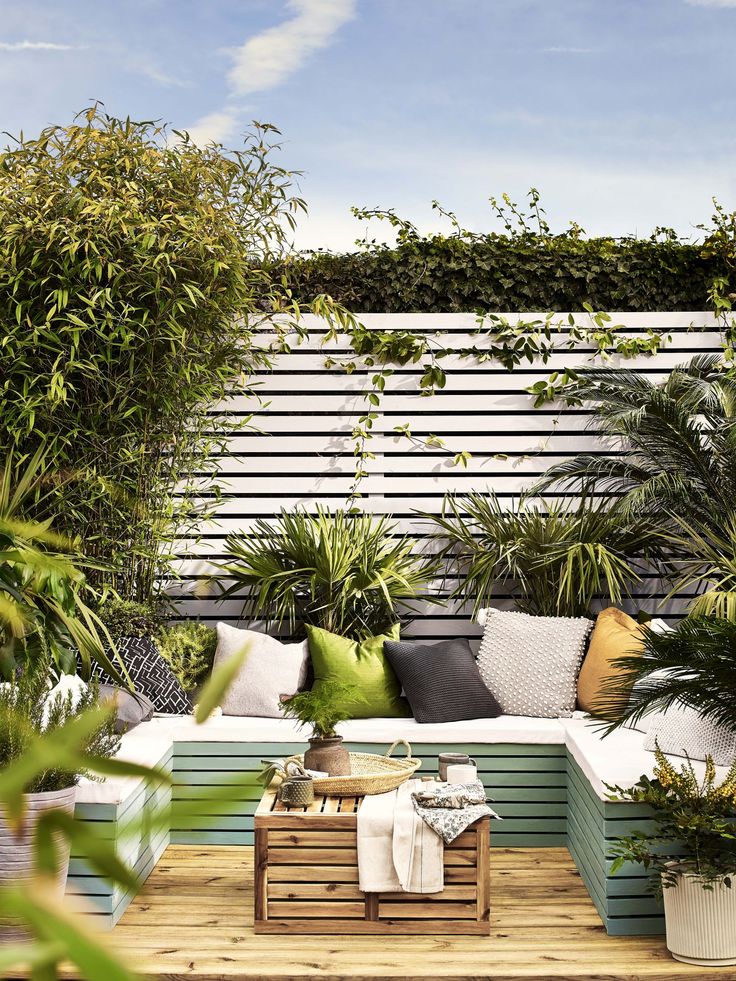 Roses perform best with at least 6-8 hours of full sun, and when planted in rich, loamy soil.
Roses perform best with at least 6-8 hours of full sun, and when planted in rich, loamy soil.
Photo by: Janet Loughrey.
7.
Clematis x ‘Nelly Moser’One way to maximize the use of a small space is to grow vining plants vertically up a wall or trellis. Clematis, known as “queen of vines,” are revered for their range of flower forms, colors and season-long interest. It’s hard to pick just one, but the hybrid ‘Nelly Moser’ is a classic favorite, with large, eye-catching striped flowers that bloom in spring and again in late summer, and showy seed heads that last until frost. Hardy in USDA Zones 4-9, ‘Nelly Moser’ is also shade-tolerant, making it a good choice for small courtyards or entryways that receive part day sun. To get the most out of a clematis garden, grow several types together, such as alpine, Jackman and Texensis that bloom at different times over the growing season. Many can be successfully grown in containers on a deck or patio.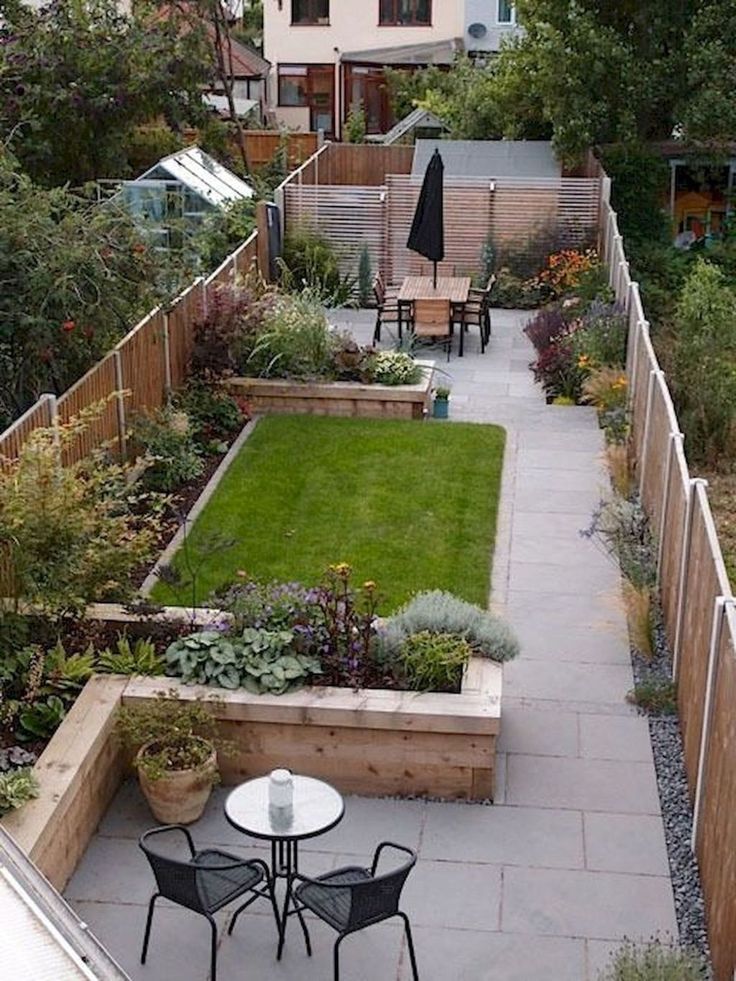
Photo by: Janet Loughrey.
8.
Heuchera spp. (coral bells)Few perennials are as diverse in foliage color, or as versatile in the garden as coral bells. With ruffled evergreen foliage in tones ranging from deep burgundy, silver red, orange, gold and chartreuse, and some with variegation or stain glass patterning, there’s something for every personal taste. The flowers that appear in late spring, some more showy than others, last well into summer. These enchanting plants, most of which grow to 12-18 inches high and wide, are invaluable for edging pathways, as accents in a mixed border, or as container specimens when combined with other small perennials or annuals. Coral bells thrive in a wide range of light conditions, from sun to shade, and perform best in well-amended soil with good drainage. Most varieties are hardy in USDA Zones 4-9, and will benefit with protection from hot afternoon sun in warmer climates.
Photo by: Janet Loughrey.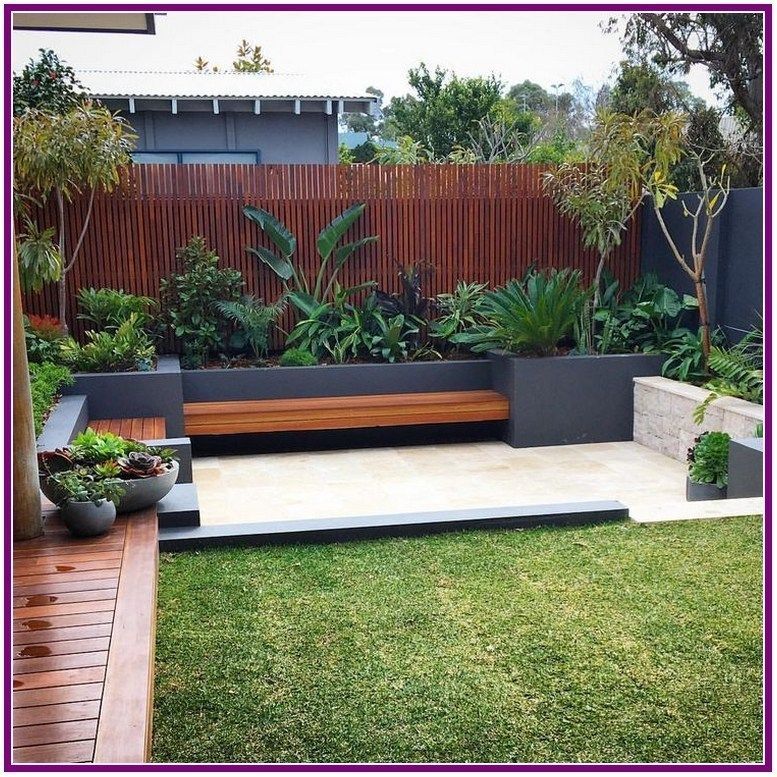
9.
Helleborus x hybridus (hybrid Lenten rose)Much attention has been given to this spring workhorse in recent years, and for good reason. Hellebores are one of the first perennials to bloom in early spring, with flower bracts that hold their color for several months. Modern hybrids such as ‘Winter Jewels™’ and ‘Winter Thriller™’ come in a dazzling array of colors, from white to deep burgundy, in speckled or picotee patterns, and single and double forms. Hellebores tolerate a wide range of soil and light conditions, and the leathery foliage stays attractive throughout the growing season. They need very little care once established; a light dressing of compost, and shearing of the old leaves is all that's needed to keep them looking great. Most hybrids are hardy from USDA Zones 4-5, to Zone 8. To best enjoy their nodding blooms, plant hellebores on a raised wall, in containers, or along a walkway near the front entrance of a home where they will be regularly enjoyed.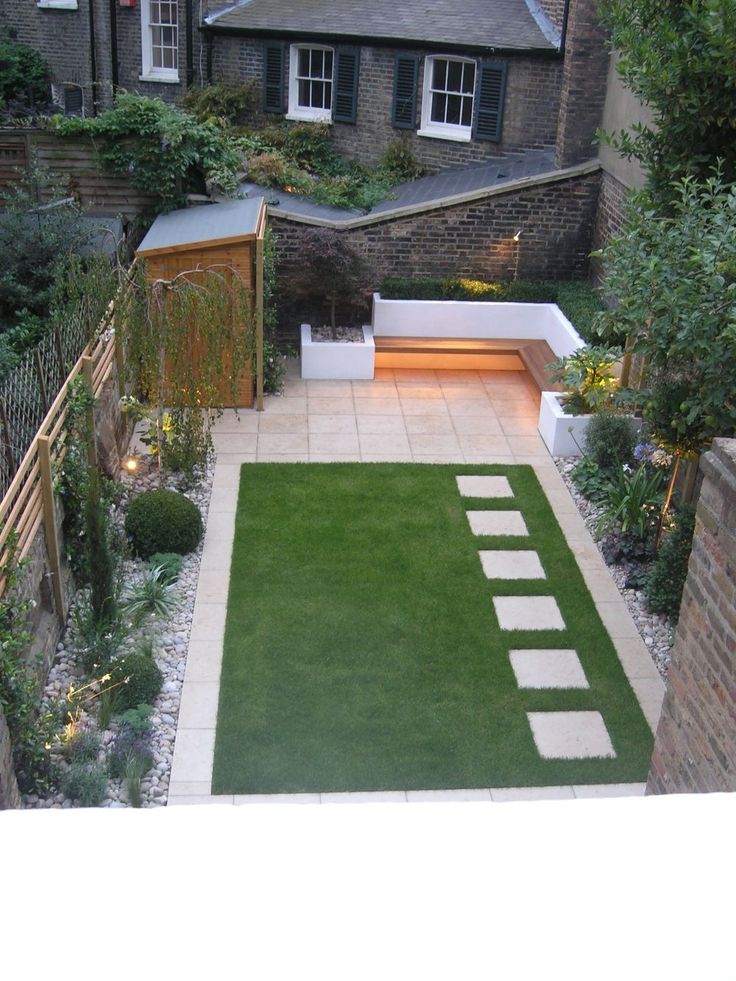
Photo by: Janet Loughrey.
10.
Hakonechloa macra ‘Aureola’ (Japanese forest grass)Smaller ornamental grasses can add season-long texture and foliage color, with many needing little or no care. One of few varieties suitable for woodland gardens or other shady areas is Japanese forest grass, with brilliant golden foliage that lights up even the darkest of spaces. Use these versatile grasses to edge borders or create repeat patterns with complementary colors of purple or brown. They are also stunning when planted in containers in an entryway, or as an eye-catching focal point. Hardy to USDA Zones 5-9, Japanese forest grass forms neat mounds up to two feet high and wide and performs best in rich, well-draining soil.
Here are a few other pointers for selecting plants for a small space:
- Plants with multi-seasonal interest including foliage, flowers, berries, bark and structure will allow homeowners to get the most out of their space.
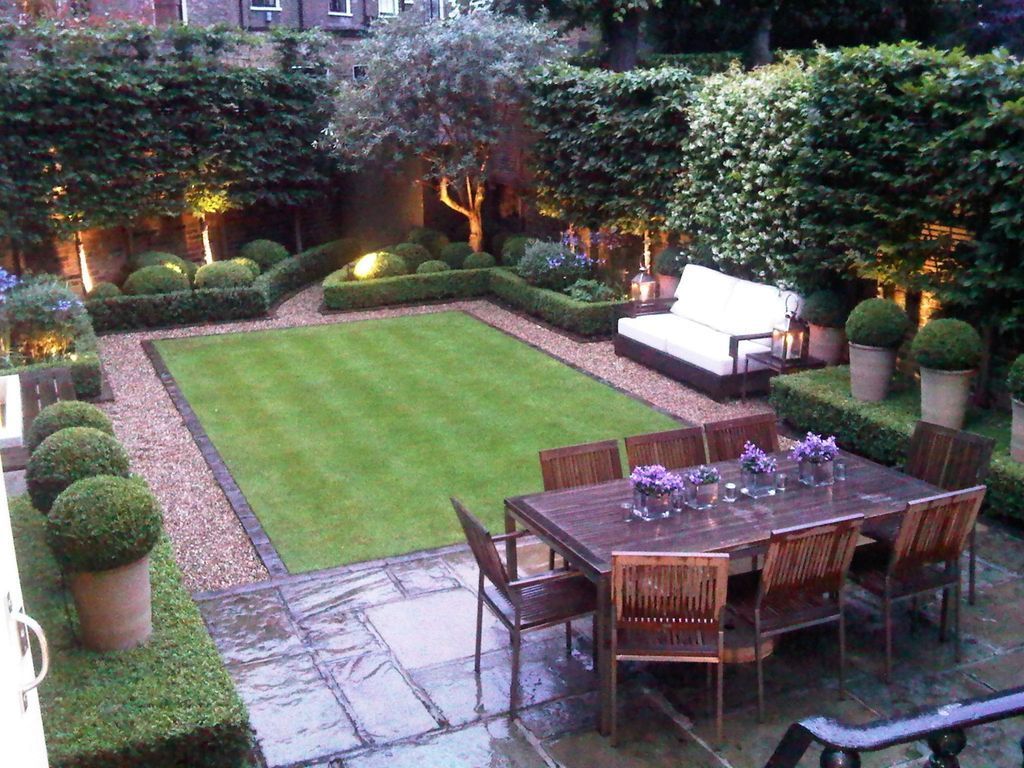
- A diverse mix of trees, shrubs, perennials and vines is key to creating an engaging living tapestry that can be enjoyed year-round.
- By choosing plants that thrive in a wide range of growing conditions and are easy to maintain, there’s more time to relax and enjoy the yard.
RELATED:
Small Evergreen Shrubs
Gallery: Small Garden Plants
7 Steps to Transform a Small Garden
30 creative small backyard design ideas
Original and practical ways to organize your small backyard. Do not be afraid to combine seemingly incompatible objects, use optical illusion and zoning techniques.
You are sure to find your own, comfortable and amazing design that will bring you pleasure and admiration of others!
Plan!
The area must not be flat and easily visible. Do not lay straight paths that visually reduce distances.
Plan your yard to include functional areas. Arches, screens, container plants, paving with different materials, terracing will help you zone the site.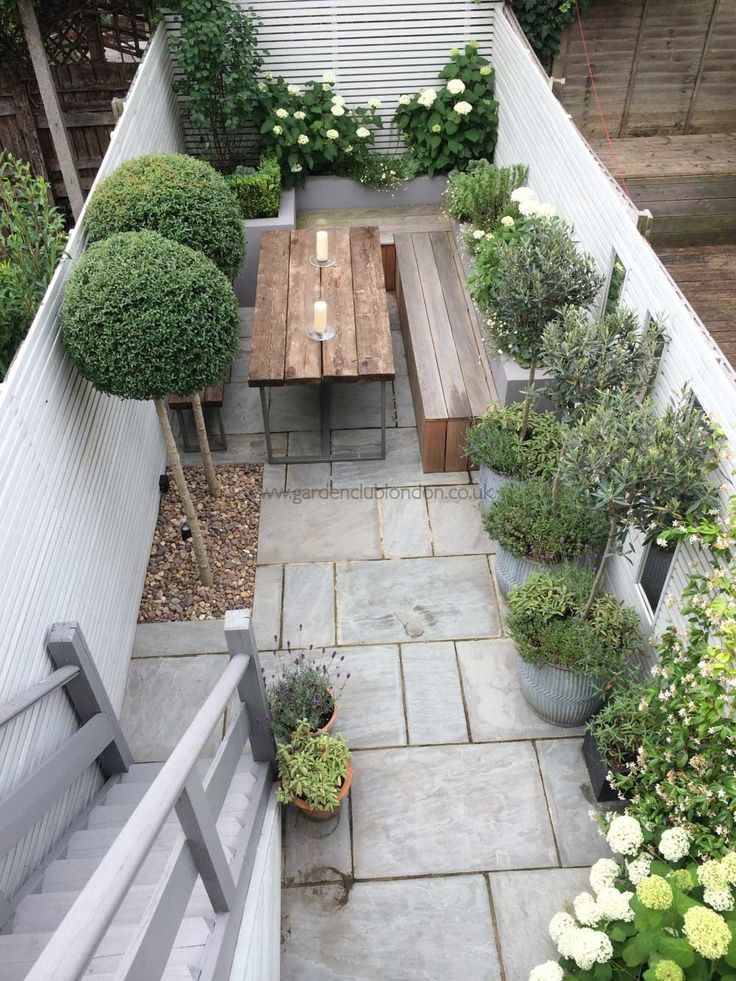
Make even a short walk around the site rich in sensations: plant spicy, fragrant plants; a gravel path can rustle pleasantly underfoot; berry bushes will give you the opportunity to eat some delicious berries.
Make paths large enough for two people to walk on.
Organizing storage areas and matching colors
Where do you store your garden tools, children's toys, bike or watering hoses?
Decide where to store these items. Then there will be more free space in the yard, the look will not cling to piles of scattered objects, the feeling of clutter will disappear.
For a smaller yard, limit the color palette to a few soothing shades. For example, white, silver, pearl, sand colors will be a great contrast for plants and yard elements, and will also be clearly visible even at night.
Light colors will visually make the space lighter and more spacious. Cold shades of blue and gray will visually push the boundaries of the yard.
Dark plants in the background will create an extra depth effect. Your territory will appear larger than it really is.
Using lighting
The level of illumination plays a big role in the perception of the space of the yard. Brightly lit areas immediately catch the eye, shady areas are convenient for secluded resting places hidden from view. Be sure to consider these nuances when planning.
Use artificial lighting, because even at night you can highlight interesting elements or entire areas: a patio, a central path, a small bench, a beautiful plant or a flowerpot.
The LED lighting options are sure to please with their cost-effectiveness and ease of placement. Such a backlight is easy to install and invisible in the daytime.
Flowers and plants
Do not plant a lot of different plants if the area is limited. Stop for a few spectacular views, trees with a neat, narrow crown.
Place tall (evergreen) plants in the background, in the middle plant low bushes of hydrangeas, roses, astilbes, and in the foreground low-growing petunias, pelargonium, coleus, hosta, geyhera, lobelia.
Use vertical landscaping and use other surfaces with good access for planting and lawns (eg garage roof).
Pay attention to landscaping the yard with moss! With a small area, this method is definitely not to be overlooked. As a result, you will get mega green spaces without any loss in area. Be sure to check out how it works and see for yourself!
Use container plants to quickly change the layout of your yard.
Recreation area
There are many ways to incorporate a barbecue area, hearth or fire pit into a small backyard design.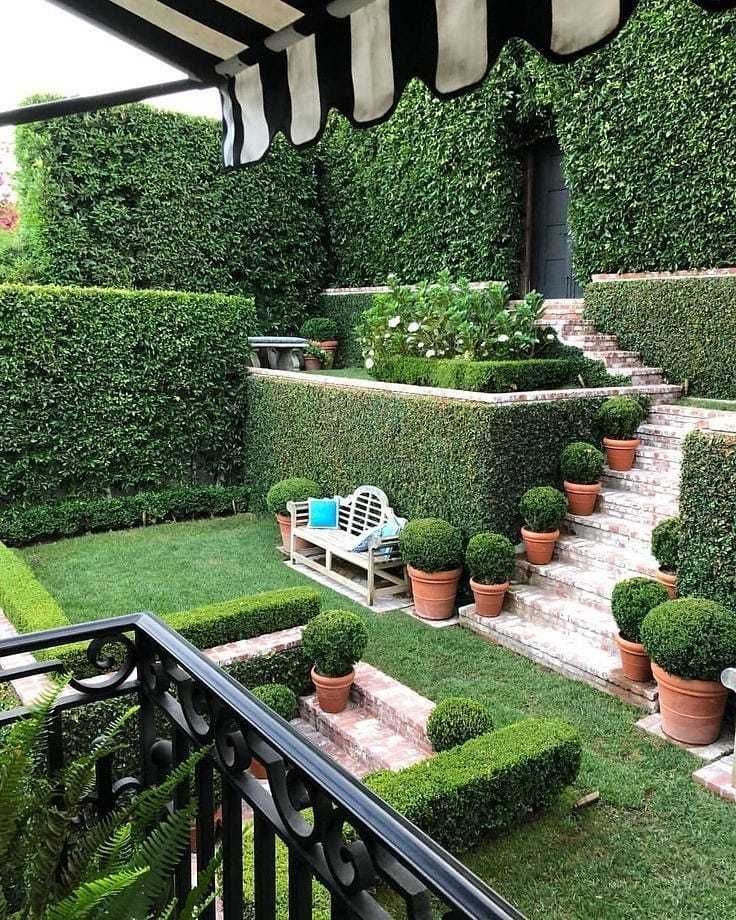 The warmth and glow of such a garden hearth is no less pleasant than from an expensive and large one. There are also models of barbecues that are attached to the wall and do not occupy the site at all.
The warmth and glow of such a garden hearth is no less pleasant than from an expensive and large one. There are also models of barbecues that are attached to the wall and do not occupy the site at all.
There is also good news for those who love water, melodious murmur and freshness in the air: it is quite possible to place a small fountain, a stream or a mini reservoir in a small area of your yard.
If there is absolutely no free space, build a beautiful drinker for birds. All of these options are sure to bring freshness and attract birds, dragonflies and butterflies to your yard!
Playground for toddlers, mini pond with waterfall, outdoor kitchen, shaped thuja in a container and flower bed - great for a small yard. This design takes into account the interests of the whole family.
Small garden: practical backyard design
Growing a beautiful garden in one season is unrealistic.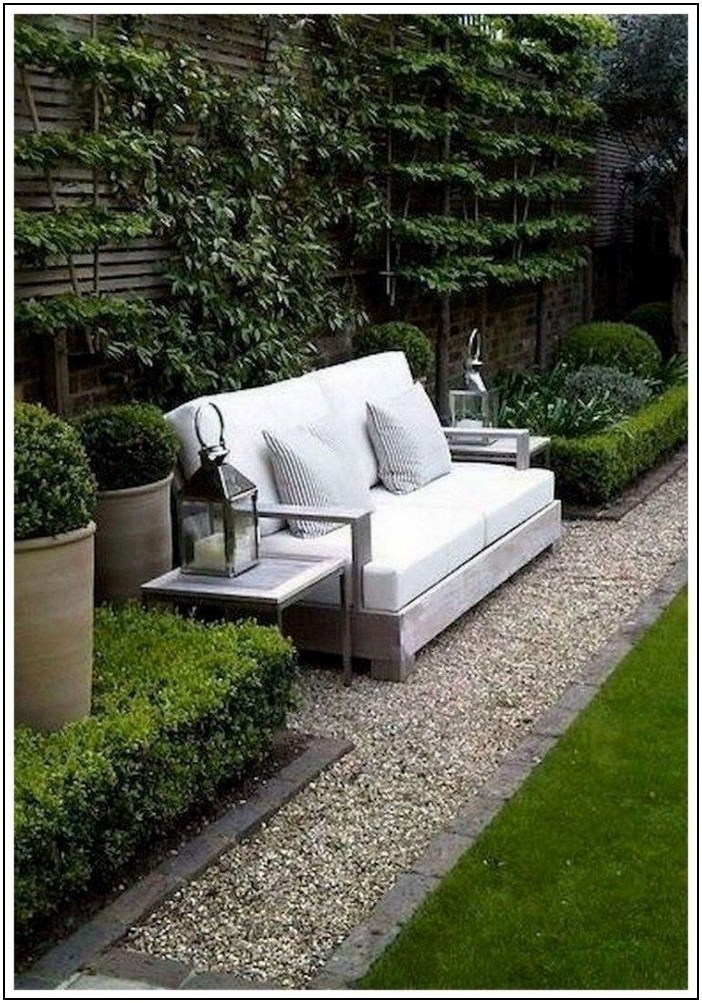 But, if you correctly approach its arrangement, then after a while you will be able to admire the beauty of nature and spend warm days and evenings in a colorful corner, even if it is compact and very small. We have prepared tips for arranging a small area, observing all the rules and the most common wishes.
But, if you correctly approach its arrangement, then after a while you will be able to admire the beauty of nature and spend warm days and evenings in a colorful corner, even if it is compact and very small. We have prepared tips for arranging a small area, observing all the rules and the most common wishes.
Spatial thinking
There is an opinion that a small front garden is easier to arrange. But it's not. In fact, a spacious garden, even in not very good condition, looks good, but with a small one, the opposite is true - planning flaws and design mistakes are immediately noticeable. Therefore, before you start planning and designing your garden, decide how many functional areas you need and try to imagine how and in what location you will decorate them.
Maintenance
At the planning stage, you also need to decide how much time and how often you are willing to devote to tending the garden.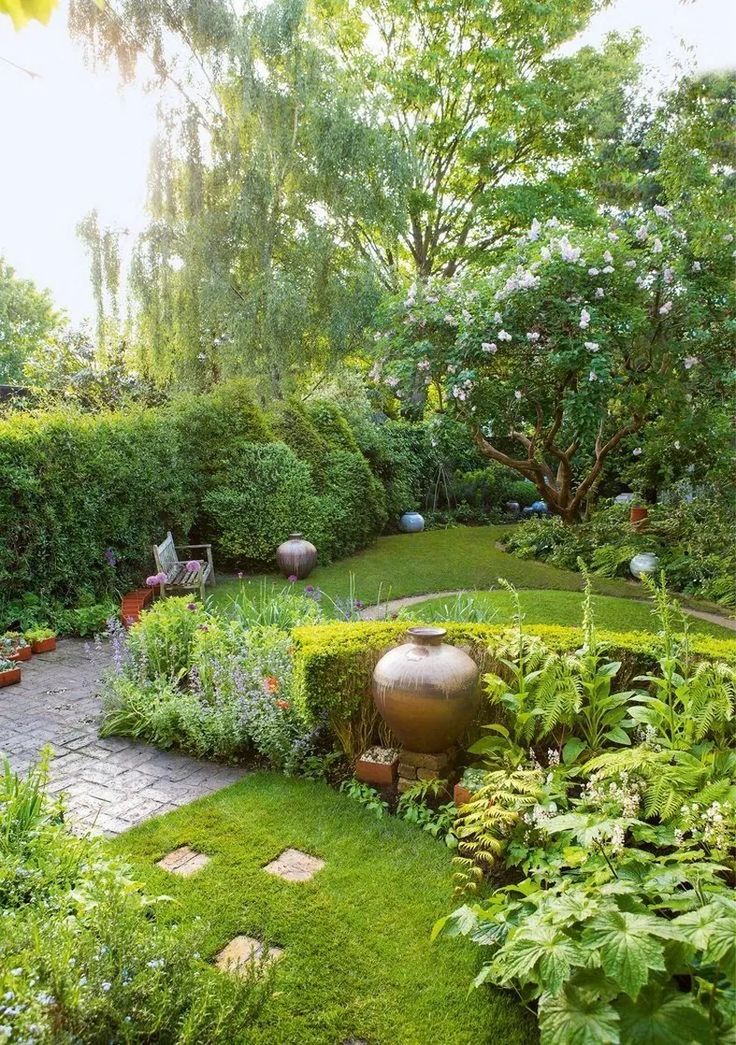 The choice of all elements directly depends on this. If you want a backyard garden that doesn't require a lot of time and effort, make the most of the space for gravel paths and fills. And if you can’t imagine the design of the backyard without bright flowers, beautiful shrubs and like to work with the earth, then prepare a spacious place for planting plants.
The choice of all elements directly depends on this. If you want a backyard garden that doesn't require a lot of time and effort, make the most of the space for gravel paths and fills. And if you can’t imagine the design of the backyard without bright flowers, beautiful shrubs and like to work with the earth, then prepare a spacious place for planting plants.
Choosing the style of backyard garden design
A lot depends on the right style, so when considering the design of the garden, it is important to decide on the direction in its design.
- Classic is great for small gardens and regular geometric shapes. The basis of the design is straight lines and right angles. Keep this in mind when planning flower beds and paths. Symmetrically arranged topiaries and shrubs, decorated in the form of geometric shapes, are perfect for them. And the lawn - it must be perfect
- Art Nouveau style can be used to advantageously decorate irregularly shaped yards.
 Its highlight is neat details, smooth lines and forged furniture elements. As the main accents, you can plant a couple of large trees and supplement them with shrubs and large perennials - luxurious hydrangeas, spireas or roses, as well as modern symbols - bright irises.
Its highlight is neat details, smooth lines and forged furniture elements. As the main accents, you can plant a couple of large trees and supplement them with shrubs and large perennials - luxurious hydrangeas, spireas or roses, as well as modern symbols - bright irises. - Hi-tech garden design is comfortable to live in and easy to care for. The size of the plot is not of fundamental importance, but the house and additional buildings must be in the same style. This style is characterized by gravel paths, paving and non-standard reservoirs. In this case, the zoning of the space is not important - the courtyard will look more like an original open-air studio.
By the way, please note:
- Patio
Often the backyard is equipped as a recreation area - it resembles another room, but in the fresh air next to the house. Rectangular, corner or round space is decorated with retaining walls, which are decorated with lattices entwined with flowering or green plants.
